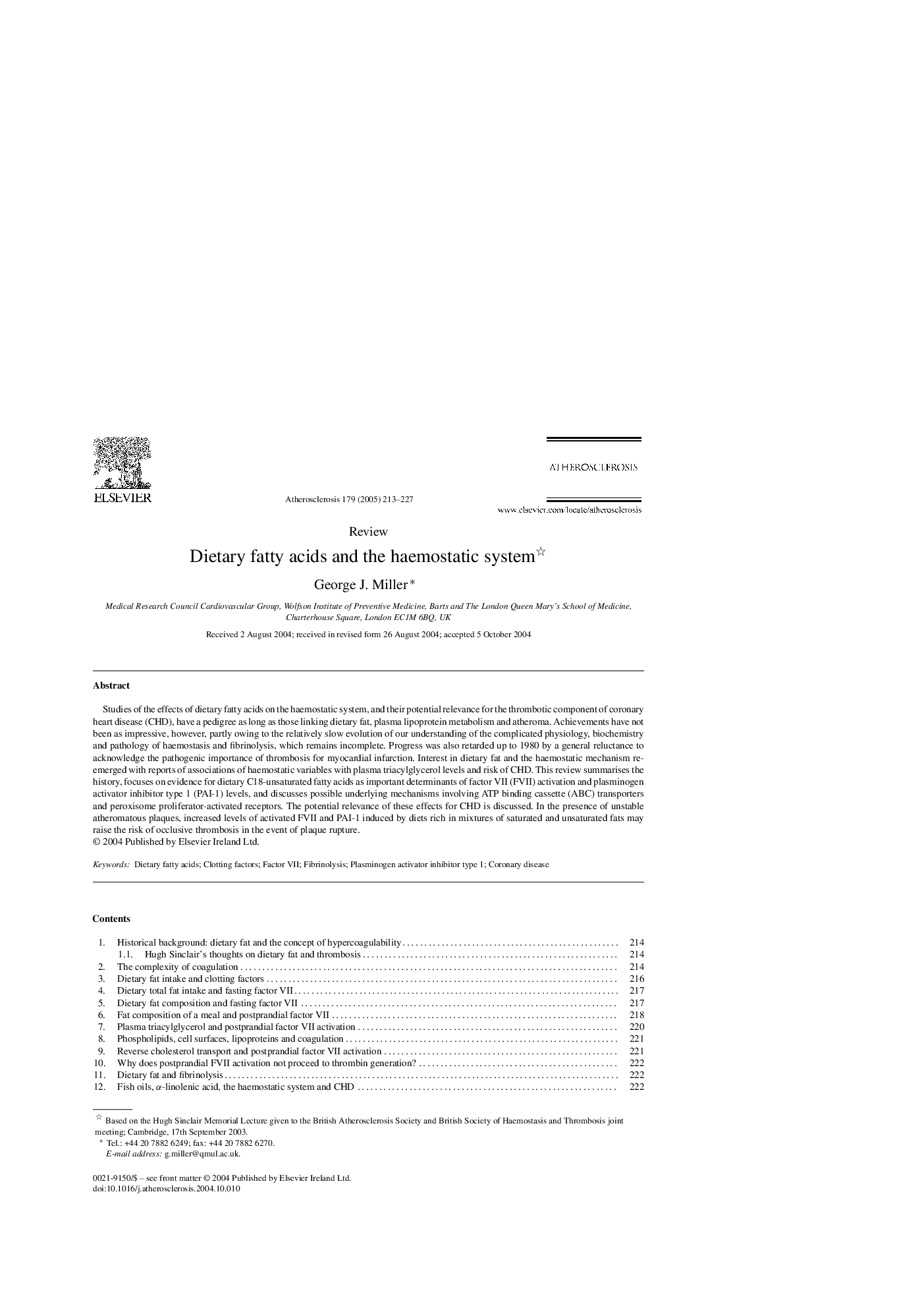| Article ID | Journal | Published Year | Pages | File Type |
|---|---|---|---|---|
| 9157831 | Atherosclerosis | 2005 | 15 Pages |
Abstract
Studies of the effects of dietary fatty acids on the haemostatic system, and their potential relevance for the thrombotic component of coronary heart disease (CHD), have a pedigree as long as those linking dietary fat, plasma lipoprotein metabolism and atheroma. Achievements have not been as impressive, however, partly owing to the relatively slow evolution of our understanding of the complicated physiology, biochemistry and pathology of haemostasis and fibrinolysis, which remains incomplete. Progress was also retarded up to 1980 by a general reluctance to acknowledge the pathogenic importance of thrombosis for myocardial infarction. Interest in dietary fat and the haemostatic mechanism re-emerged with reports of associations of haemostatic variables with plasma triacylglycerol levels and risk of CHD. This review summarises the history, focuses on evidence for dietary C18-unsaturated fatty acids as important determinants of factor VII (FVII) activation and plasminogen activator inhibitor type 1 (PAI-1) levels, and discusses possible underlying mechanisms involving ATP binding cassette (ABC) transporters and peroxisome proliferator-activated receptors. The potential relevance of these effects for CHD is discussed. In the presence of unstable atheromatous plaques, increased levels of activated FVII and PAI-1 induced by diets rich in mixtures of saturated and unsaturated fats may raise the risk of occlusive thrombosis in the event of plaque rupture.
Keywords
Related Topics
Health Sciences
Medicine and Dentistry
Cardiology and Cardiovascular Medicine
Authors
George J. Miller,
